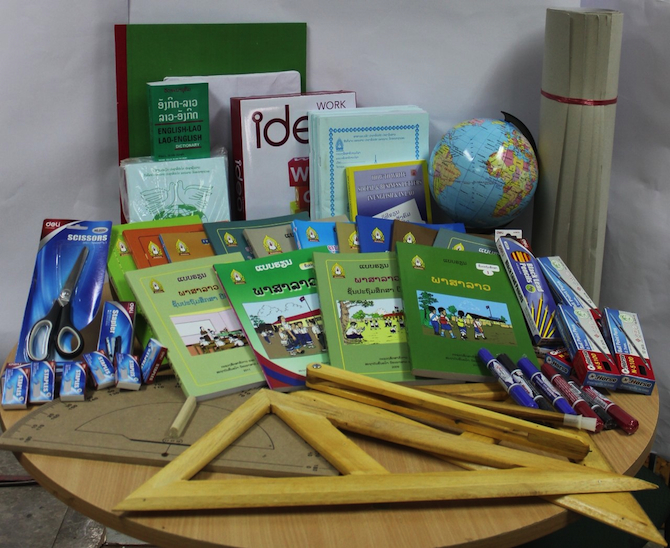Materials are needed to support learning and the development of children who attend an Italian primary or preschool. A few examples of the types of items you might require include: Textbooks and Workbooks: These are necessary for subjects that are fundamental like Italian math, science, math as well as social studies.
Craft and art materials They include crayons, paint, brushes, markers and other materials students can make use of for their creative projects.
Blocks, puzzles and games are all manipulatives that can be utilized to aid students develop their ability to think critically and solve problems.
Education technology: Computers (tablets, laptops, etc.).) as well as other technologies can help students learn and can give them extra resources.
Visual aids: Posters, charts, maps, and other visual aids may aid students in learning and retaining crucial concepts.
Books: A wide variety of appropriate for the age of the reader. Italian books can help to encourage language and reading development.
Musical Instruments: Musical instruments, such as xylophones (or xylophones), tambourines (or maracas), and other instruments are a great way to aid students in learning the rhythm of music and appreciate it.
Safety supplies include fire extinguishers and first aid kits and emergency procedures posters will ensure the safety of students and staff.
Sports equipment: Balls, cones, and other equipment are suitable for physical education classes and playing outside.
Italian primary, nursery and secondary schools require a variety of teaching tools to create a stimulating learning environment. Follow the recommended scuola primaria for more recommendations.

What Math-Related Teaching Materials And Educational Tools Are Advisable In Italian Nurseries
Maths teaching materials and educational aids can assist children in Italian nurseries improve their spatial, numerical and problem-solving capabilities. Here are a few examples of materials that could be used to teach counting: Counting manipulatives counting bears, beads and blocks aid children build their ability to count and fine motor skills and hand-eye co-ordination.
Number cards, charts Cards and charts to teach your children how to count and also to master numbers. These could be colorful, large cards or even larger numbers for the wall.
Shape manipulatives. Shape manipulatives can be useful for children to improve their spatial reasoning abilities and to learn about different shapes.
Instruments for Measuring: Measuring devices such as rulers (or measuring tapes) and scales (or scales) and measuring tapes can be used to aid children in developing their mathematical vocabulary and gain knowledge about comparisons and measurements.
Simple games are used to develop the problem-solving ability of kids. They also help them increase their concentration and attention.
Technology-based learning aids for students. Technology aids like tablets with math-related games and apps can help engage children in the classroom and provide them with extra resources.
It is essential to use the material according to its development stage and to ensure that they are appropriate and safe for young kids. Teachers and parents are able to make use of these resources in order to create engaging, interactive math activities that encourage curiosity and enthusiasm for learning. View the top rated materiale didattico matematica for site advice.

What Materials And Resources Are Needed In Italian Kindergartens For Teaching Science?
In Italian nurseries, science education materials can help children discover and discover the world. Here are a few examples of when science teaching materials may be required: Curriculum and lesson plan A well-planned lesson program and curriculum that integrates scientific concepts will help to ensure that youngsters are exposed to and taught various concepts in science.
Manipulatives (and visual aids): Manipulatives, such as magnifying spectacles natural specimens, basic science experiments kits, and charts and posters, can aid in teaching children about scientific concepts through a hands-on, interactive method.
Books and videos. Books or videos on topics such as weather or space, animals, and plants can engage children as well as provide additional resources.
Outdoor learning spaces: Gardens and playgrounds, for example can give children the opportunity to explore and learn about the natural world.
Parents' involvement: Involving parents in the science curriculum will help reinforce the knowledge taught in the nursery classroom and encourage participation of the family in learning.
Assessment tools: Teachers and caregivers can use assessment tools to monitor the development of children and identify areas that may need more assistance.
It is crucial that the tools used in science teaching are age-appropriate. These materials are perfect for teachers and parents to develop interactive, engaging science activities that encourage children's enthusiasm for learning and curiosity. Read the recommended schede didattiche scienze sostegno for blog advice.

What Materials For Geography Education Are Needed By Italian Nurseries?
Italian nurseries employ geography-related resources to help children understand different cultures, environments and nations. These are some examples for geography materials that could be required maps. They can assist children to comprehend the geographical and geographic features of various regions and nations and the locations of natural landmarks.
Globes. Globes can assist your child to see the Earth's surface. They can also learn more about the continents.
Pictures and video Pictures and videos various locations around the world can help children understand the cultural differences and help them appreciate them.
Books: Age-appropriate books that feature different cultures and places can encourage children to get interested in geography and a sense of curiosity about the world.
Natural materials. Materials such as shells and plants are excellent for teaching children about ecosystems.
Field Trips: Children are able to gain valuable geography knowledge through field trips to local Zoos, parks and museums.
It is essential to select teaching resources for geography that are age-appropriate as well as culturally sensitive. These resources will assist teachers and parents design exciting and enjoyable geography lessons for kids that stimulate their curiosity and interest in exploring the world.
